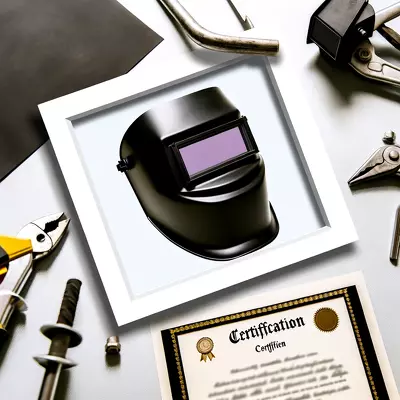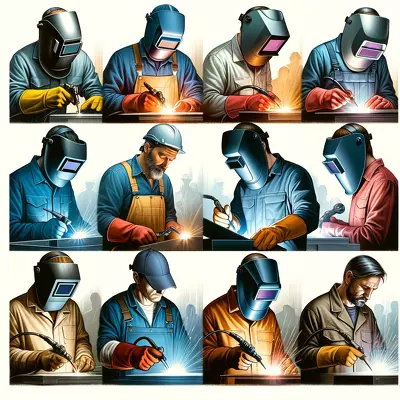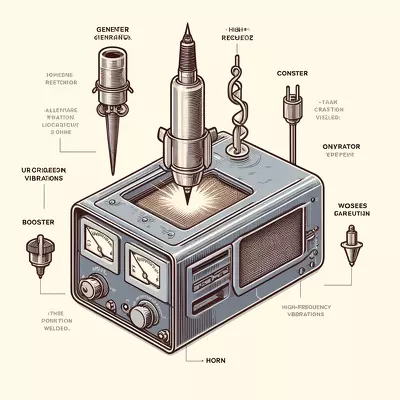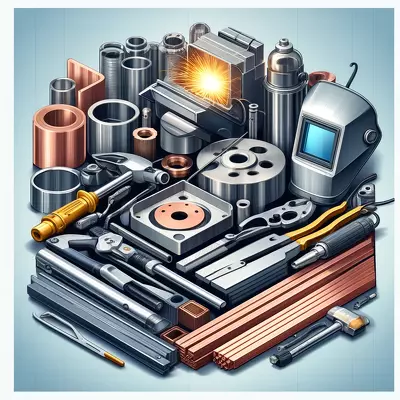Forging Your Future: The Artisan’s Guide to Welding Certification Mastery

Becoming certified in welding is a crucial step for those looking to advance their careers in the manufacturing and construction industries. This certification process verifies your skill level and can open doors to higher-paying positions and a wider range of job opportunities. It involves passing practical and theoretical exams that assess your ability to perform various welding techniques safely and effectively. Pursuing welding certification requires dedication and a commitment to mastering the craft.
I. Introduction
A. Importance of Welding Certification
Welding certification stands as a pivotal milestone for individuals aiming to excel in the welding industry. This credential not only validates the welder’s proficiency and adherence to industry standards but also instills confidence in employers about the welder’s capability to handle complex tasks. In sectors where precision and safety are paramount, such as construction and manufacturing, a certified welder is often viewed as an asset, contributing to the overall success and integrity of projects.
B. Overview of the Certification Process
The path to obtaining a welding certification encompasses both theoretical knowledge and assessment of practical skills. Candidates must demonstrate their welding abilities across various techniques and materials, complying with the specific standards set by accrediting bodies. Preparation for these exams often involves formal education, on-the-job training, and independent study, culminating in a comprehensive evaluation that tests both the execution of welding tasks and understanding of safety practices and theoretical concepts.
II. Understanding Welding Certification
A. Different Types of Welding Certifications
Welding certifications vary widely, catering to the diverse techniques and applications within the field. From basic certifications like the Certified Welder (CW) to specialized endorsements such as the Certified Welding Inspector (CWI), each certification serves a unique purpose and sets specific criteria tailored to various levels of expertise and specialties within welding.
B. Key Skills and Knowledge Required
Success in achieving welding certification requires a blend of hands-on skills and theoretical knowledge. Proficiency in different welding techniques, understanding of metallurgy, and familiarity with blueprint reading are fundamental. Equally important is the welder’s awareness of safety protocols and quality standards, ensuring not only the integrity of the welds but also the safety of the welding environment.
C. The Role of Professional Welding Organizations
Professional welding organizations play a crucial role in the certification process. These entities, such as the American Welding Society (AWS), establish the standards and guidelines for certification, ensuring a consistent and recognized benchmark for welders worldwide. They also provide resources, training programs, and support for welders preparing for certification exams.
III. The Certification Process
A. Eligibility Criteria
Eligibility for welding certification typically involves a combination of education, experience, and skill demonstration. Requirements can vary depending on the certification body and the specific certification being sought, with some requiring prior completion of educational programs or apprenticeships.
B. Preparing for the Certification Exam
- Practical Training
Hands-on experience is indispensable for aspiring welders. Practical training, whether through vocational schools, apprenticeship programs, or on-the-job training, provides the foundational skills needed to perform welding tasks proficiently and meet the stringent criteria of the certification exams. - Theoretical Knowledge
A thorough understanding of welding theory complements practical skills. Study areas include welding processes, material science, safety protocols, and codes and standards. This knowledge base is critical for passing the written component of the certification exams.
C. Taking the Exam
- What to Expect on Exam Day
On exam day, candidates will face a series of tests designed to evaluate their welding technique and theoretical understanding. Practical exams require the completion of specific welding tasks, while written tests assess knowledge of welding principles and safety measures. - Tips for Success
Preparation is key to success in the certification exams. Practicing various welding techniques, studying industry standards, and taking mock exams can enhance a candidate’s confidence and performance. Time management and a clear understanding of exam instructions also contribute significantly to a positive outcome.
IV. After Certification
A. Maintaining and Upgrading Your Certification
Welding certification is not a one-time achievement but a continuous commitment to professional development. Regular recertification and pursuing advanced certifications as technology and standards evolve are essential for staying current in the field.
B. Career Opportunities and Advancement
Certification opens up a broader spectrum of job opportunities, including higher-paying positions and roles with greater responsibility. It signifies to employers a dedication to the craft and a high level of competence, paving the way for career growth and advancement.
V. FAQs
Q: What is the best way to prepare for a welding certification exam?
A: Combining practical experience with a solid understanding of welding theory and safety practices is the most effective preparation strategy.
Q: How long does it take to get certified in welding?
A: The timeline varies based on the type of certification and the individual’s background, ranging from a few months to over a year for more advanced certifications.
Q: Can I get welding certified online?
A: While theoretical components can be studied online, practical exams must be completed in person under the supervision of a certified examiner.
Q: What are the costs associated with welding certification?
A: Costs can vary widely depending on the certification body, type of certification, and preparatory courses or materials needed.
Q: Is welding certification required for all welding jobs?
A: While not all welding jobs require certification, being certified can significantly enhance job prospects and credibility in the field.
Q: How often do I need to renew my welding certification?
A: Renewal periods vary by certification, with many requiring periodic assessments or continuing education to maintain the credential.
Q: Are there any specialized welding certifications for specific industries?
A: Yes, there are certifications tailored to industries like aerospace, automotive, and underwater welding, each with its unique requirements and standards.
Q: What welding schools are recommended for certification preparation?
A: Schools accredited by recognized welding organizations, such as those approved by the American Welding Society, are recommended for comprehensive training.
Q: What makes Western Welding Academy stand out among welding schools?
A: Western Welding Academy is renowned for its intensive hands-on training programs and industry-experienced instructors, and it focuses on preparing students for immediate employment and certification success.
VI. Conclusion
A. The Value of Welding Certification in Your Career
Achieving welding certification is more than just passing an exam; it’s a recognition of skill, dedication, and professionalism in the field. It enhances your marketability, leads to higher wages, and opens the door to advanced career opportunities. This credential serves as a testament to your commitment to excellence and safety in welding, setting you apart in a competitive job market.
B. Next Steps After Certification
Upon certification, continuous learning and skill development are crucial for career advancement. Exploring new welding technologies, techniques, and certifications can contribute to personal growth and professional success. Engaging with the welding community and professional organizations can also provide valuable networking opportunities and insights into industry trends.
VII. Suggested Readings
Equipping yourself with knowledge is key to embarking on the journey to welding certification. The following books are excellent resources for aspiring welders and those looking to deepen their understanding of the field.
- “Modern Welding” by Andrew D. Althouse, Carl H. Turnquist, William A. Bowditch, Kevin E. Bowditch, and Mark A. Bowditch: A staple in welding education, this book provides an extensive overview of welding technology, safety practices, and career opportunities.
- “Welding For Dummies” by Steven Robert Farnsworth: Perfect for new welders, this book demystifies welding techniques and equipment, offering step-by-step instructions and practical tips.
- “Metals and How to Weld Them” by Theodore Brewster Jefferson and Gorham Woods: This classic text introduces the properties of different metals and the principles behind welding them. It serves as an essential reference for welders aiming to enhance their metallurgical understanding and technical skills.
Exploring these texts can provide a solid foundation for understanding the complexities of welding, aiding in both certification preparation and ongoing professional development. As the welding industry continues to evolve with new technologies and methodologies, staying informed and educated is key to navigating your career path successfully.






